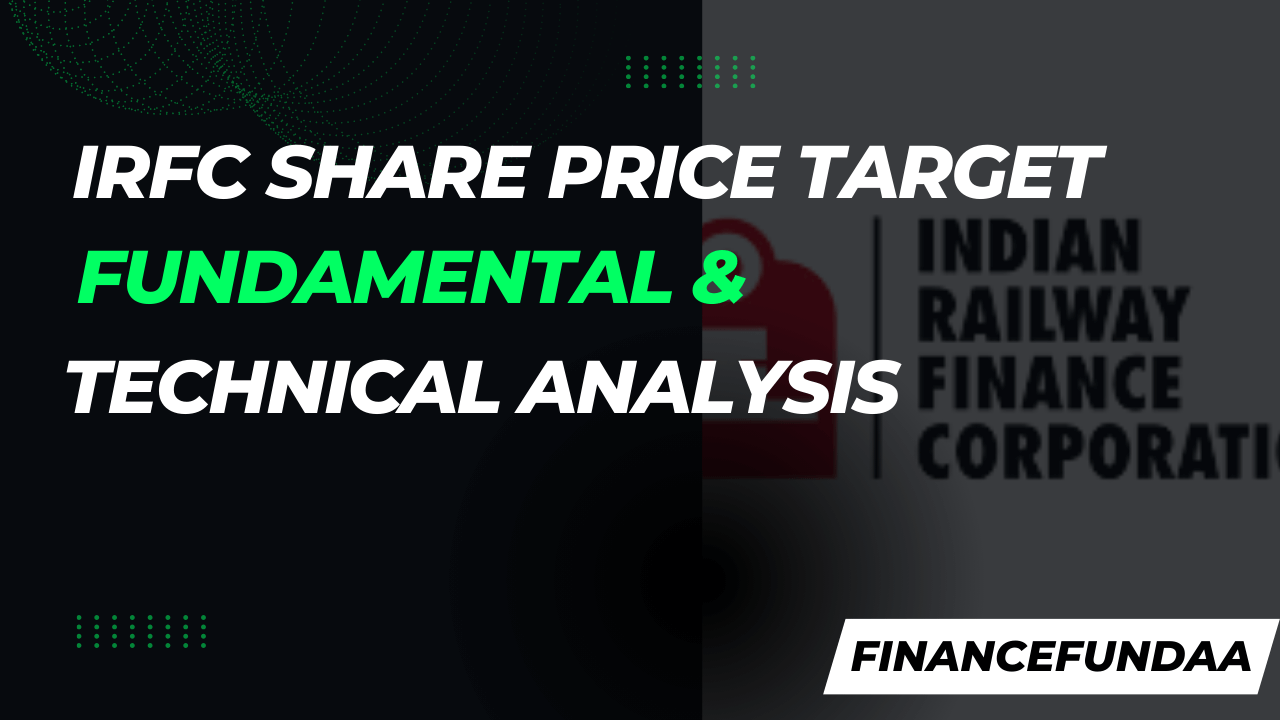In this blog, we have discussed about IRFC Share price target 2024 based on the following aspects:
- Business Operations
- Business Model
- Earning Model
- Technical analysis
- Fundamental analysis
About IRFC
IRFC stands for Indian Railway Finance Corporation. It is a public sector undertaking of the Government of India under the Ministry of Railways. IRFC is a dedicated Financial Services Company, which arranges funds to meet the developmental needs of the Indian Railways.
IRFC Business Operations
Leasing:
- IRFC acts as a financier, raising funds through bonds, loans, and other financial instruments.
- Using these funds, IRFC acquires railway assets like locomotives, passenger coaches, and freight wagons, and even contributes to infrastructure projects.
- These acquired assets are then leased back to Indian Railways for a pre-determined period (typically, it is of 30 years) at a fixed lease rental.
- This leasing arrangement allows Indian Railways to modernize and expand their operations without a large upfront capital investment.
Lending:
- IRFC also extends lending services to other entities under the Ministry of Railways (MoR).
- This could include companies like Rail Vikas Nigam Limited (RVNL) involved in railway infrastructure development or Railtel, which provides telecom services for the railways.
Borrowing:
- By raising funds at competitive rates, IRFC ensures Indian Railways gets access to financing in a cost-effective way. IRFC Share Price Target 2024
Also Check: Swing Stocks For April 2024
Also Check: HAL Share Price Fundamental Analysis | Company with Zero
IRFC Business Model
Borrowing:
IRFC raises funds at competitive rates through various channels by issuing bonds (taxable and tax-free) in the domestic and international markets and taking term loans from banks and financial institutions.
Asset Acquisition:
The raised funds are used to acquire rolling stock (locomotives, coaches, wagons, and other infrastructure projects sanctioned by the Indian Railways.
Leasing:
They lease the acquired assets to Indian Railways for a typical period of 30 years. A primary lease period of 15 years for recovering the principal amount and interest on the loan. A secondary lease period of 15 years with minimal rentals. IRFC Share Price Target 2024
IRFC Earning Model
IRFC follows a cost-plus lease model. This means their earnings come from the spread between the cost of funds they borrow and the lease rentals they charge the Indian Railways.
Step 1: Raising Funds at Lower Costs
IRFC taps into various financial markets to raise capital at competitive rates. This includes issuing bonds (domestic and international) and taking loans from banks and institutions.
Step 2: Leasing Assets with Markup
The raised funds are used to purchase rolling stock (locomotives, coaches, wagons) or fund railway infrastructure projects. IRFC then leases these assets to the Indian Railways, not owning them directly.
Step 3: Lease Rental Structure
Lease rentals are designed to cover IRFC’s expenses and generate profit. These rentals typically span 30 years and include:
- Principal Recovery: The primary lease period (usually 15 years) focuses on recovering the initial loan amount borrowed by IRFC.
- Interest Payment: Lease rentals also cover the interest incurred on those borrowings.
- Profit Margin (Net Interest Margin): This is the key to IRFC’s earnings. The lease rentals are structured to include a markup over the borrowing costs, representing IRFC’s profit.
IRFC acts as a middleman, acquiring funds at lower rates and then leasing the financed assets with a built-in profit margin. IRFC Share Price Target 2024
IRFC Share Price Target 2024
IRFC Fundamental Analysis Video
You can also check any company’s fundamentals at Screener
IRFC Technical Analysis Video
Know More: IRFC Share Price Target 2024, 2025, 2026, 2030 (Updated April 2024)
Learn here How I draw Support and Resistance
Conclusion
Hope you get good insights on IRFC Share Price Target 2024.
Disclaimer: The information provided on this website is for general informational purposes only and should not be construed as financial advice, investment recommendations, or guarantees of any kind. This information is not intended as a substitute for professional financial advice. You should always seek the advice of a qualified financial advisor before making any investment or financial decisions.
